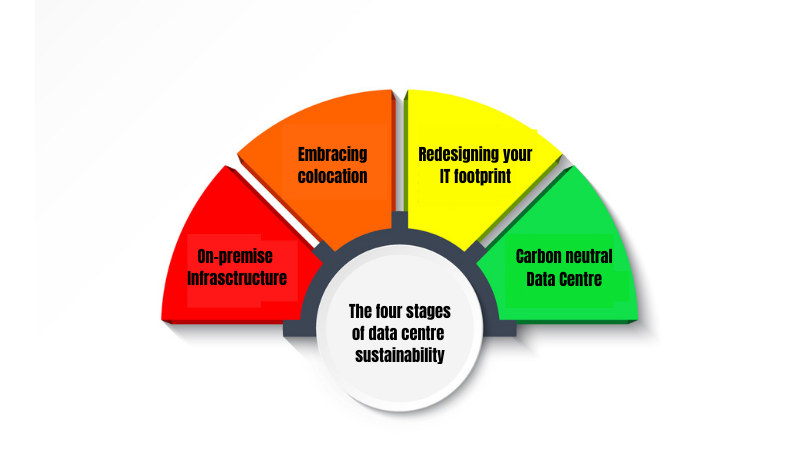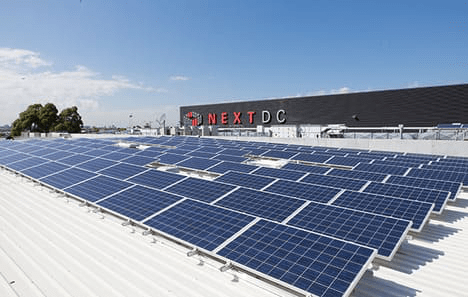By Steve Martin, Head of Channels
The heightened focus on technology as a driver of growth and innovation comes with challenges, not the least of which is the environmental impact of growing carbon emissions.
Extraordinary volumes of data, ever-expanding digital footprints and the dependence on interconnectivity from everywhere to everyone has led to compounding energy usage. This has forced a re-think of what best practice resilient, sustainable IT architecture looks like.
Soaring energy consumption
Under the weight of exponential growth of technology and our reliance on data, it’s estimated that data centres alone will consume as much as 8% of the world’s power by 2030 (currently ~2%).
Let me offer an example of what that looks like in real terms. Three years ago, the average amount of power consumed by our customers within their racks was 2-3kW (about the amount of electricity needed for a suburban house). Today the average power consumed is ~5-6kW. In the next 3-4 years we anticipate that being more than ~10kW per rack.
In managing these accelerating power requirements around digital transformation, our customers are forced to walk the tightrope of balancing security, resilience, and performance risks which are accelerating energy consumption.
What this means is that more sustainable digital infrastructure, that doesn’t compromise 100% reliability and availability, is needed. Not just in response to mitigating the environmental impact, but to reduce energy costs and to support rising ESG imperatives.
The four stages of IT sustainability
With pressure mounting globally on the economy to reduce carbon emissions, the energy efficiency of data centres has risen up the stack of key considerations.
Data centres and the ICT sector are the fastest growing consumers of electricity, and thus a significant contributor to carbon emissions. Therefore, it’s up to all of us who use and supply the digital plumbing that drives society forward, to be accountable for reducing our environmental impact wherever possible. The largest technology companies are leading the way in committing to more sustainable business processes.
AWS has committed to using 100% renewable energy for its infrastructure by 2030 and is on track to achieve this by 2025. Google has been carbon neutral since 2007 and Microsoft is targeting carbon negative operations by 2030.
At NEXTDC, our corporate operations have been carbon neutral since 2019 and we extend that offer to our customers. This means our customers can neutralise the carbon from their IT footprint housed in our facilities.
As the advancement of digitisation continues to intensify the burden of carbon emission growth, it makes sense to understand what a logical pathway to more sustainable IT operations looks like.

Red zone – on-premise infrastructure
On-premise data centres – whether they be in sophisticated facilities, small server rooms or a few servers under the stairs – are generally 3-5 times less efficient than a purpose built, hyperscale data centre.
Most customer sites operate at a Power Usage Effectiveness (PUE) rating of between 2 and 3. For e.g a PUE of 2.5 means that for every unit of IT power, another 1.5 units of electricity to power and cool your IT is needed. The main reasons for this come down to having inefficient infrastructure, poor design, unused floorspace and a lack of consistent tuning for efficiency.
PUE is largely overlooked as organisations don’t delineate between power requirements for their on-premise digital infrastructure, and the office environment.
Orange zone – getting into colocation
Sustainability milestones don’t have to be achieved on your own. Working with your supply chain is the best place to start. Tapping into their expertise and programs is a ripple that will turn into a tidal wave of change, across the business and industry.
Start your journey to more sustainable business practises by engaging your supply chain and identifying colocation partners who operate facilities at a PUE closer to 1.3 (three times more efficient than a PUE of 2.0). Shifting your infrastructure into a purpose built, highly efficient colocation facility enables you to take significant strides in the right direction.
Similarly, look for data centre providers that are NABERS (National Australian Built Environment Rating System) certified. A NABERS 5-star rated data centre is the most energy efficient in the country.
An additional benefit of colocation is only using the space you require. This greatly improves the efficiency of your environment as you aren’t required to power or cool unused space.
Yellow Zone – Redesigning your I.T footprint
Redesigning your IT footprint to take advantage of rapidly evolving technologies such as hyperconverged infrastructure, SD-WANs, solid state storage, virtualisation, and automated spillage to cloud can further help to reduce power savings.
Identifying and removing “ghost IT” – servers powered and operating but no longer running any applications or services – will also help. At the end of the day the greenest power is always going to be power not used.
Leveraging best of breed as-a-Service offerings from within the data centre such as backup, security, storage, infrastructure, platform and many others, enables you to further reduce your own footprint. Embracing these transformative digital trends relies heavily on interconnecting everything from everywhere to everyone. This is best achieved within the interconnected ecosystems in colocation facilities.
Green Zone – Carbon neutral infrastructure
The final step in advancing a sustainable transformation agenda comes with offsetting carbon emissions directly attributed to power consumed by your physical IT infrastructure.
Measuring and accounting for carbon generated by your IT infrastructure is complex, and near impossible for many organisations. But it is achievable, quickly with zero complexity, by partnering strategically with a Climate Active certified colocation provider who manages environmental impact of your IT footprint for you.
Continual improvement
Paul Kelly popularised the lyric “From little things, big things grow” and this is exactly the sentiment that applies to organisational sustainability. There’s no end game, just continual improvement, so start small, ask for help, lean on your supply chain and make incremental gains where you can.
Our NEXTneutral program pre-calculates the variables relating to the carbon footprint of your IT operations. For less than $5 p/kilowatt p/month, you can offset your data centre power consumption and become carbon neutral, within 30 seconds of deciding to do so.
Reach out to discuss how we can help you strip out the complexities of achieving more sustainable business operations and neutralising your IT footprint.


